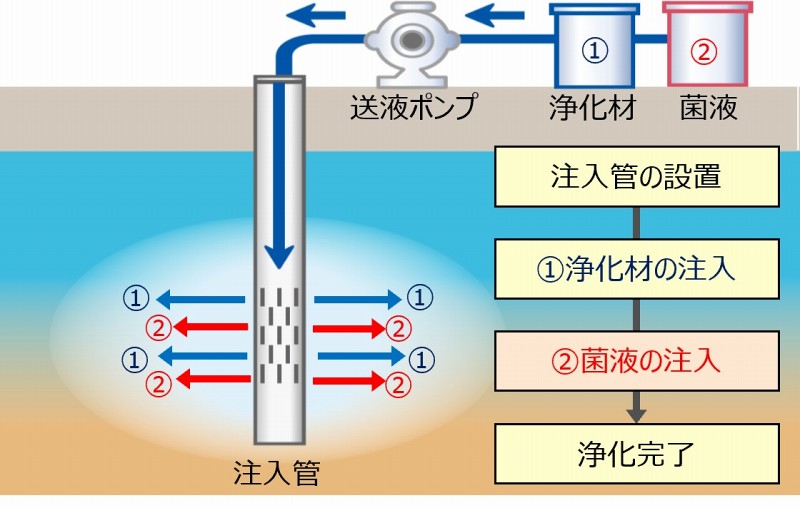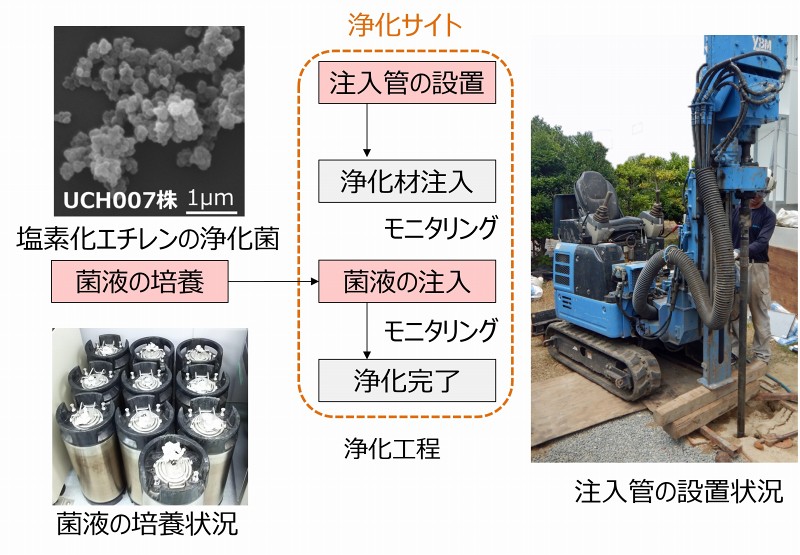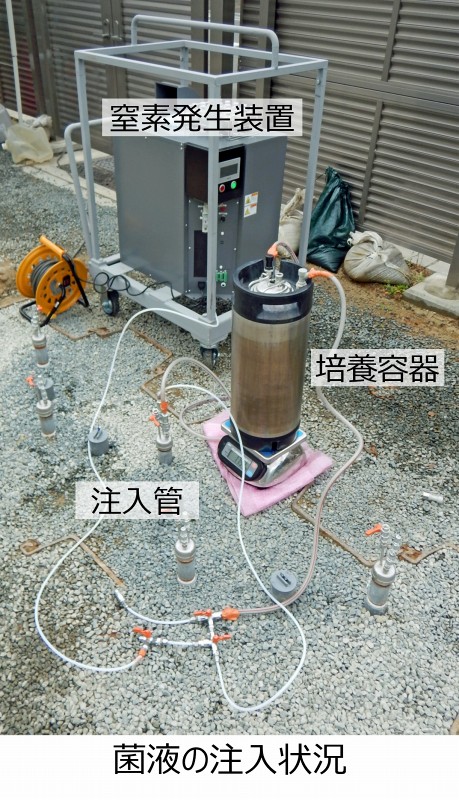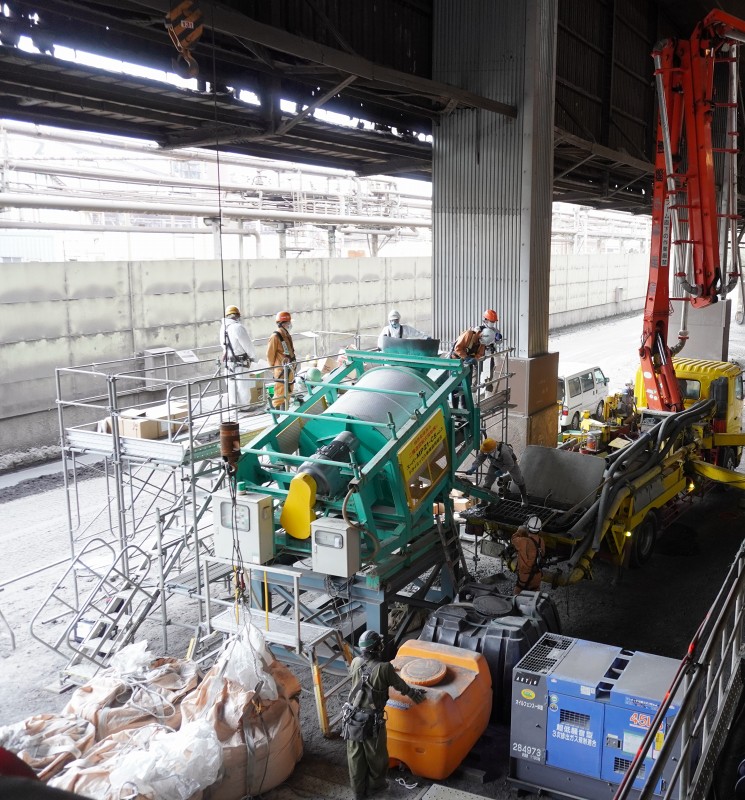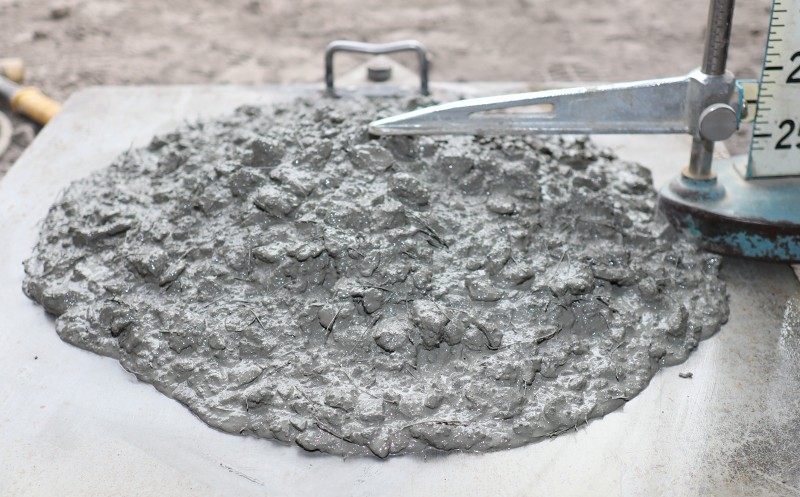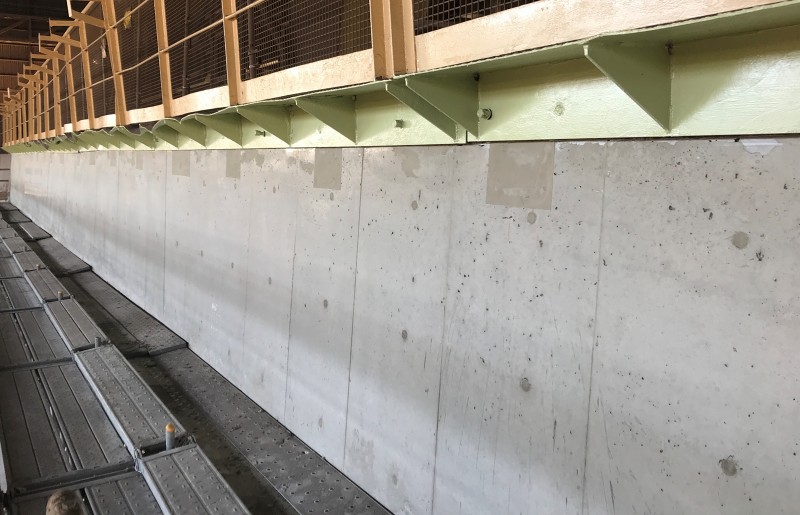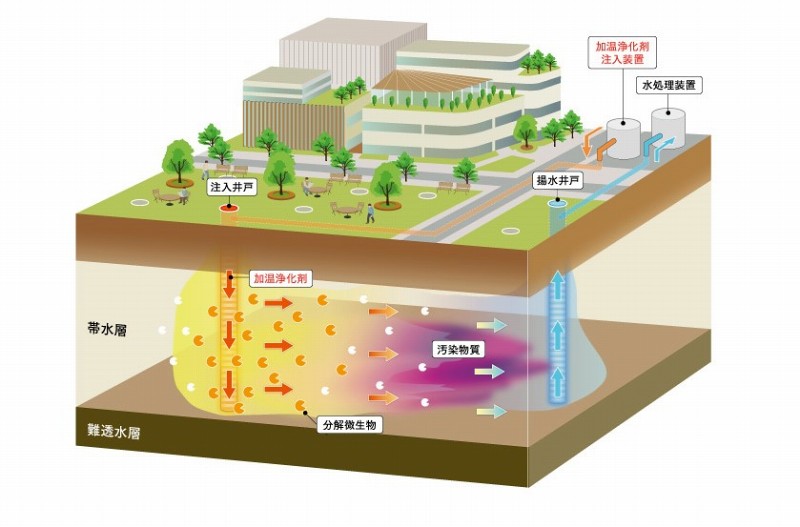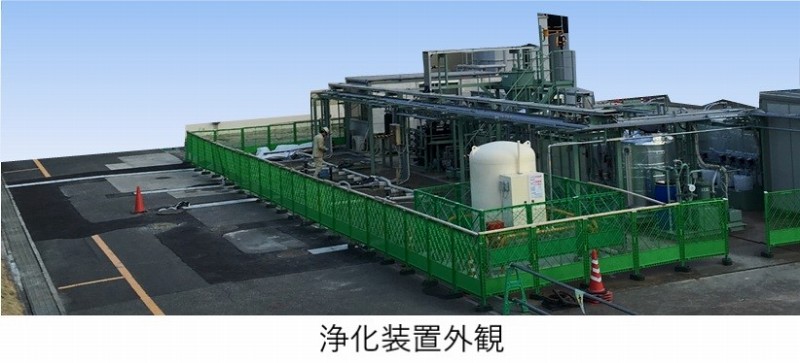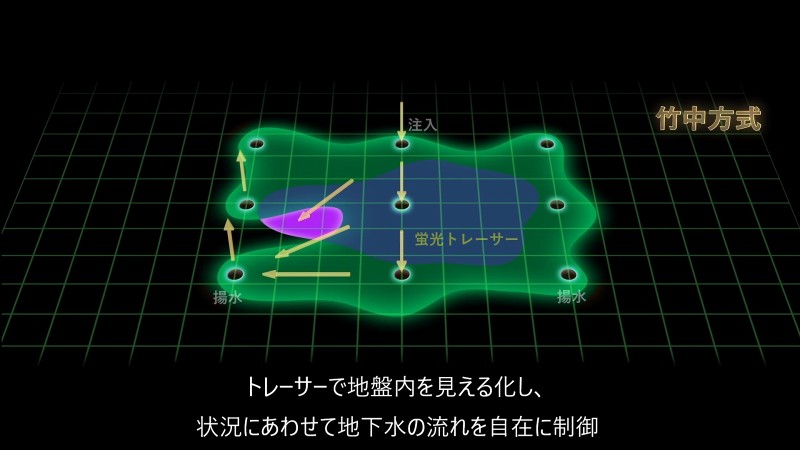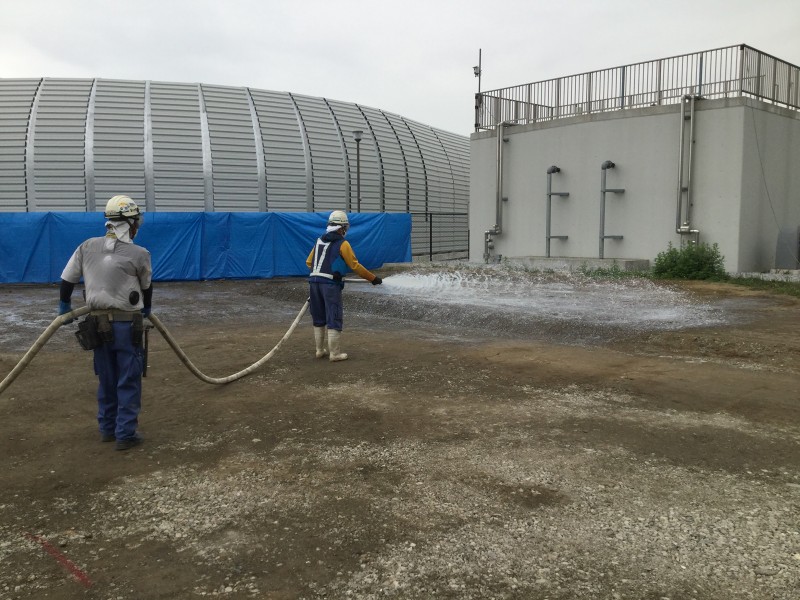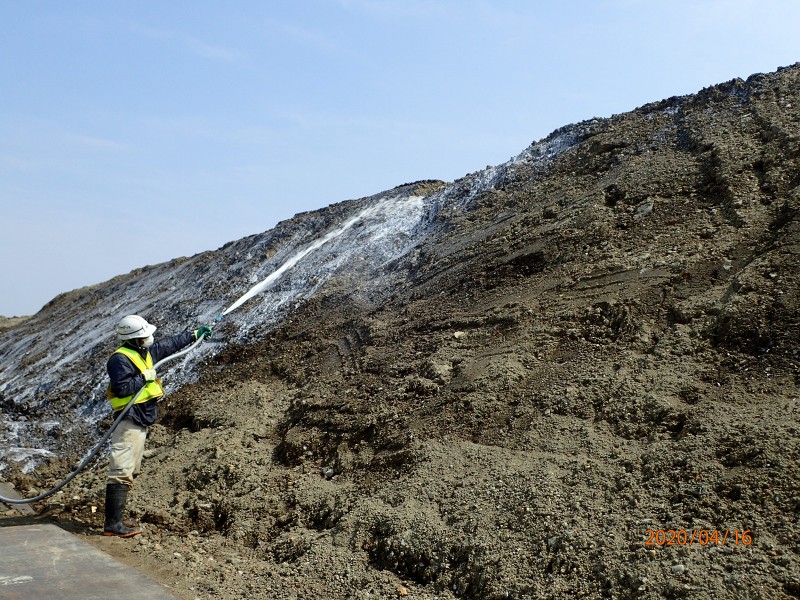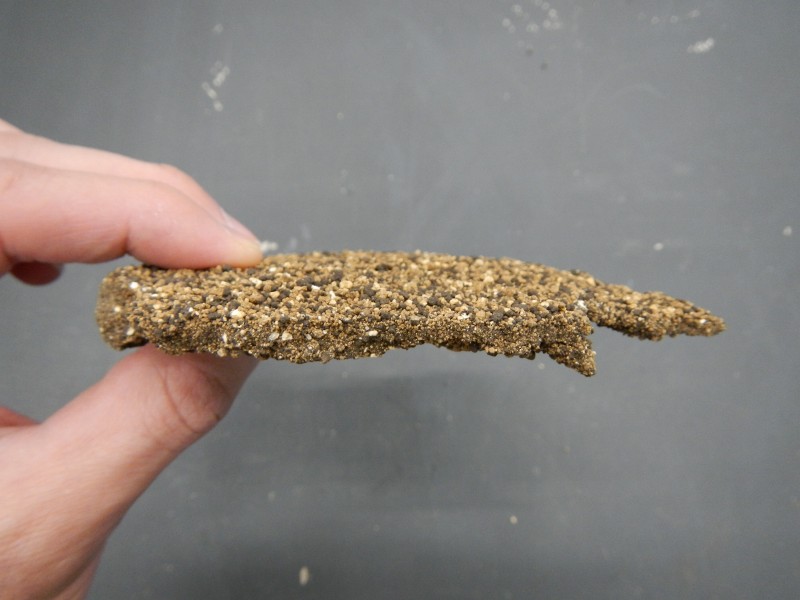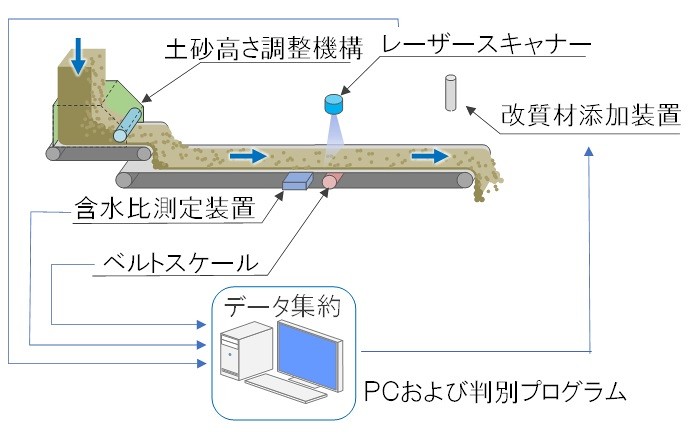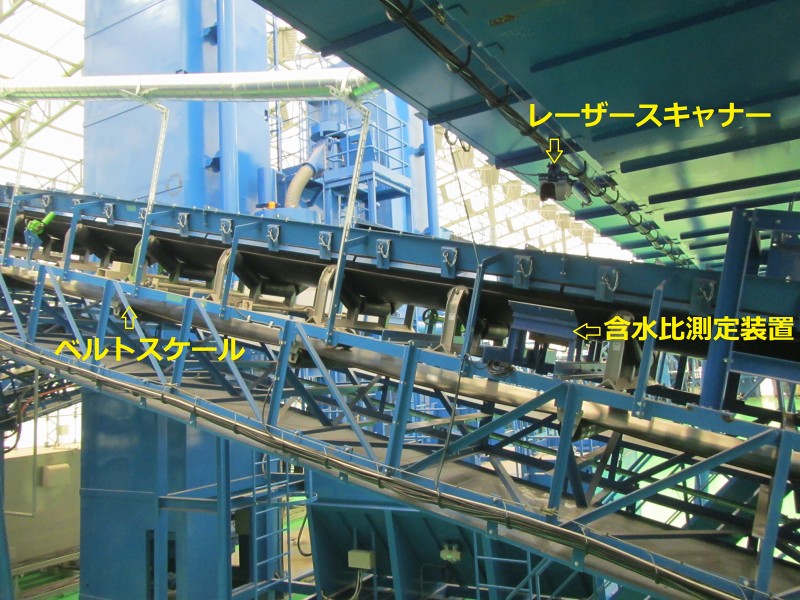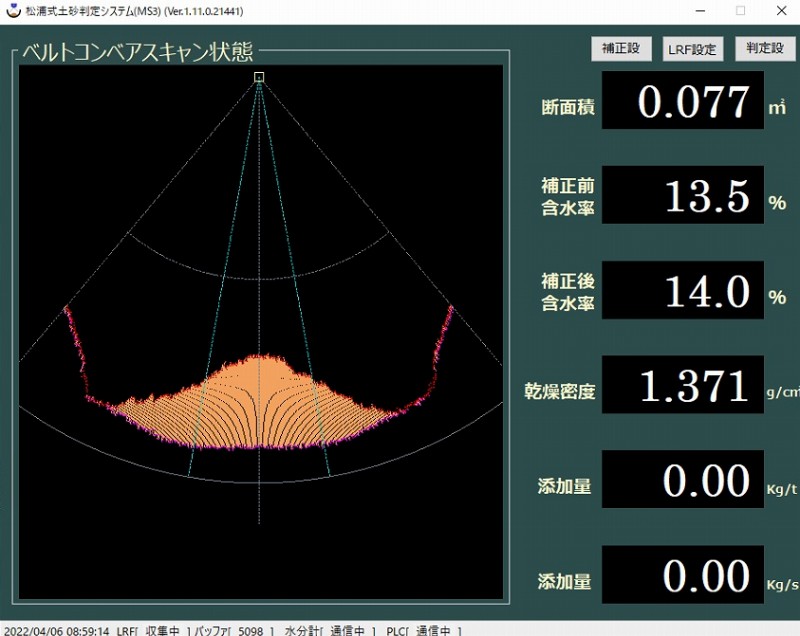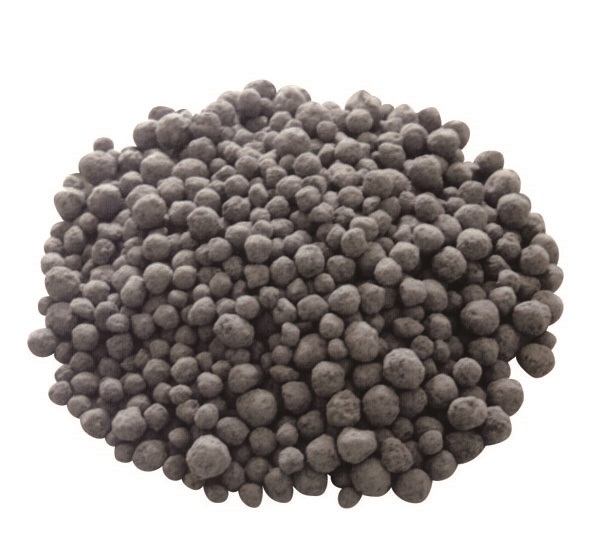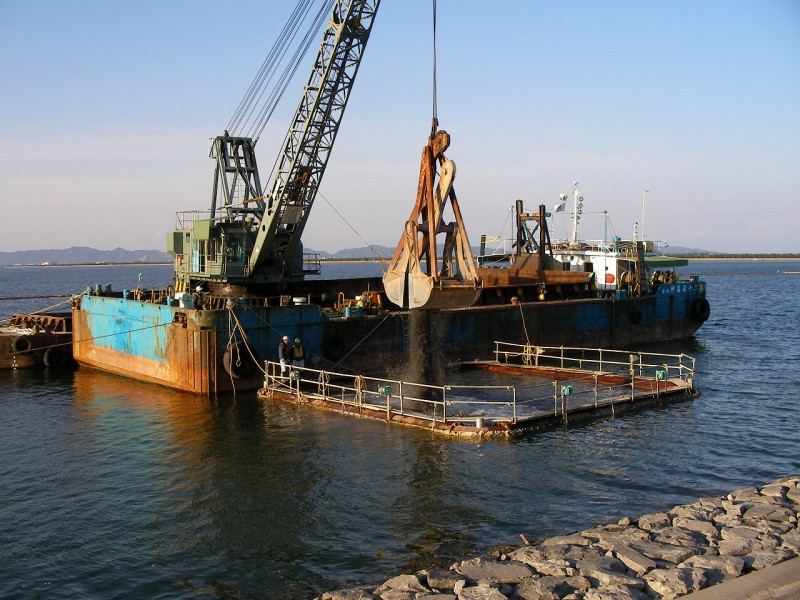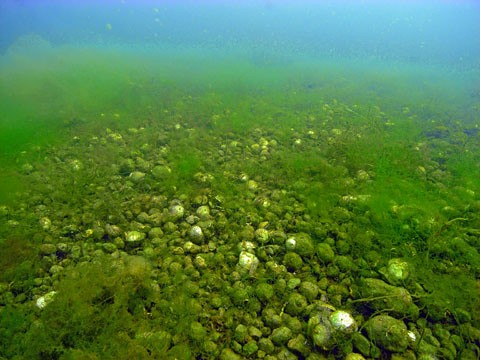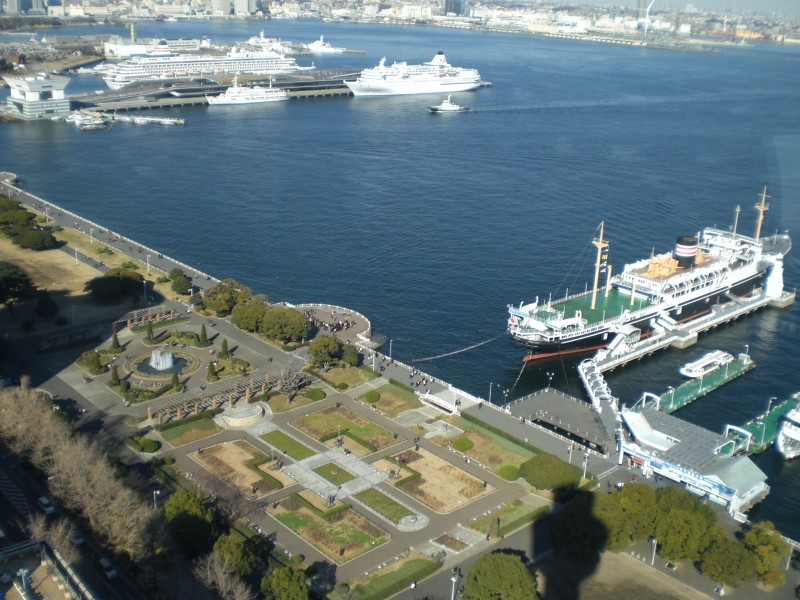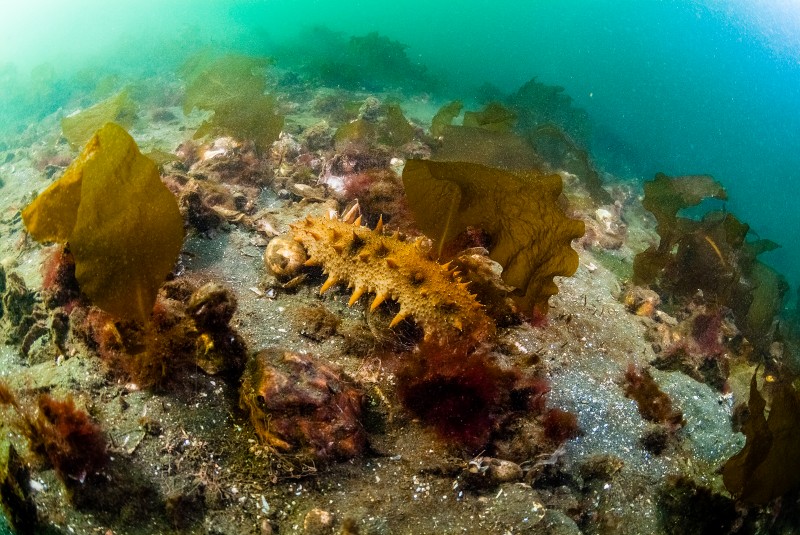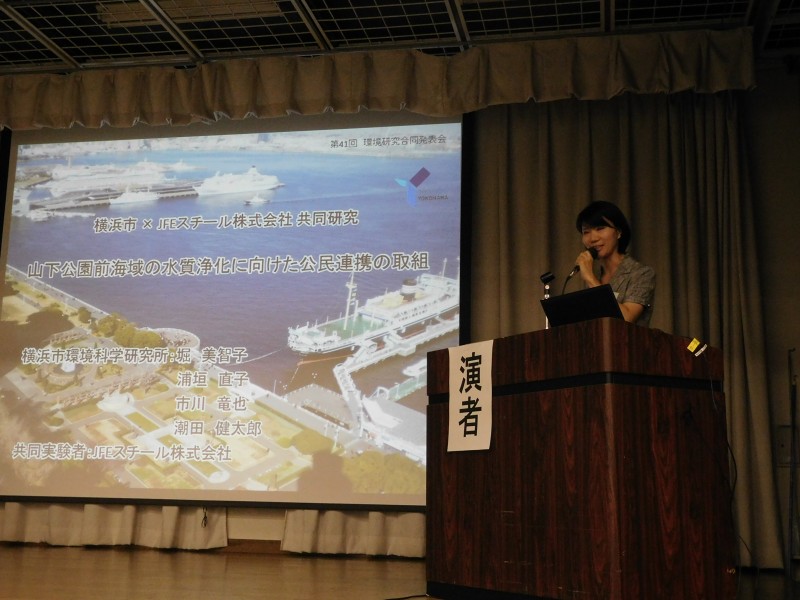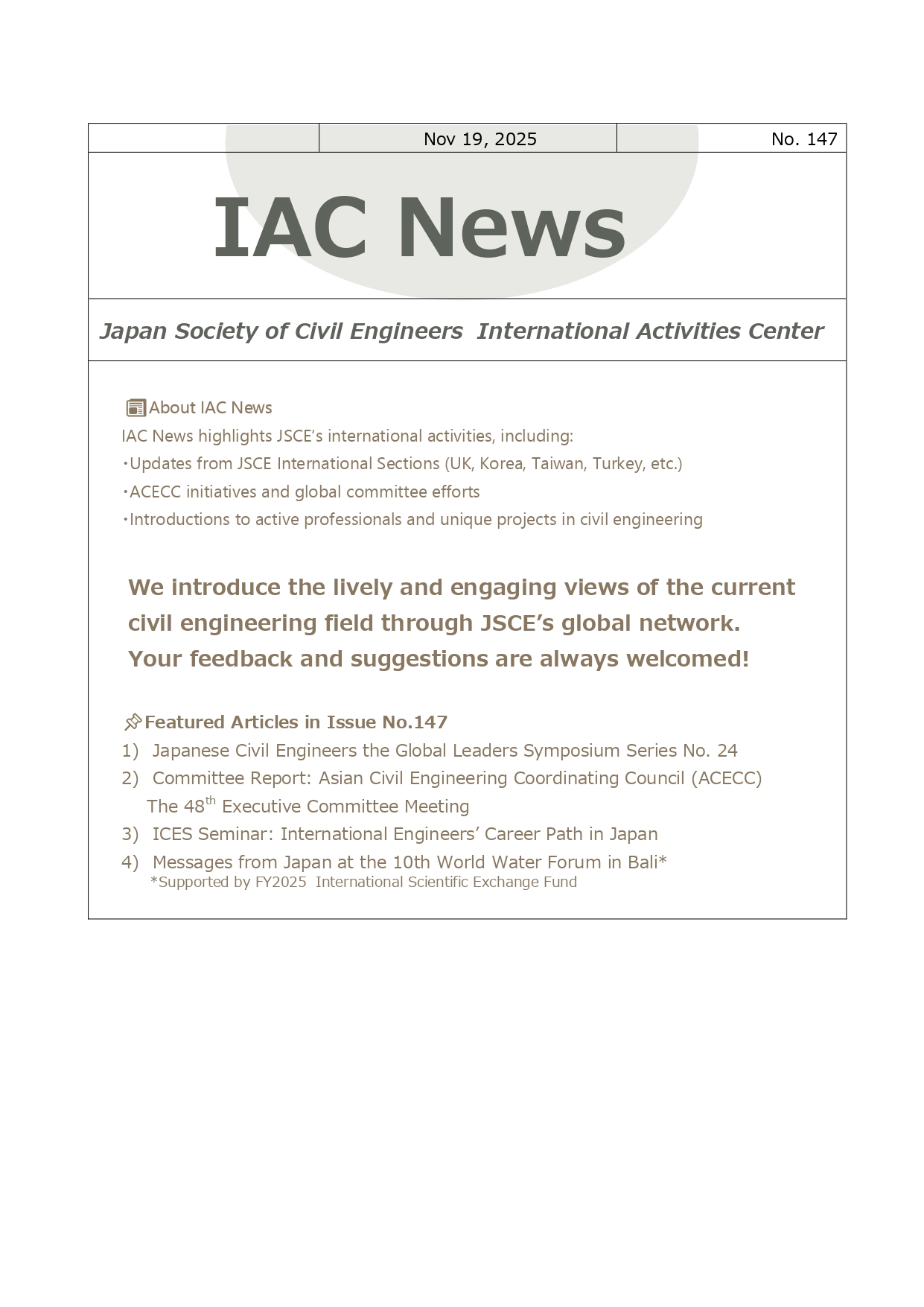2021 Environmental Awards
[Group-1]
1. Development of a clean-up technology for groundwater contaminated with chlorinated ethylenes using Dehalococcoides sp. strain UCH007
- Taisei Corp.
- National Institute of Technology and Evaluation
We have developed a new bioremediation technology that combines a highly safe bacteria (Dehalococcoides sp. strain UCH007) and a newly developed method for injecting a bacterial solution into the contaminated aquifer. Demonstration tests have confirmed that our technology can shorten the cleanup period by approximately two months and reduce costs by approximately 50%.
This technology is also applicable to sites that are difficult to cleanup by conventional methods, such as factories in operation or narrow urban location.
We will continue to contribute to the achievement of the SDGs by solving environmental pollution problems.
2. Development of cast-in-place geopolymer concrete
- Shunji Aoki
In the production of cement, which is the main raw material of ordinary concrete, about 770 kg of carbon dioxide is emitted per ton, so its reduction is an important issue. The geopolymer used in this technology is solidified by adding an alkaline solution to powder made from fly ash, which is a by-product of thermal power plants. Carbon dioxide emissions are comparable to other geopolymers, 20-35% of ordinary concrete. On the other hand, this geopolymer can secure a pot life by adding a special dispersant, and develops a predetermined strength by normal temperature curing in the field. Taking advantage of its features, it has been adopted for on-site repair work of rebar concrete structures under high temperature, and was evaluated as a technology that is expected to increase versatility.
3. Development of thermally enhanced in situ bioremediation technology for soil and groundwater contamination with less CO2 emission
- Takenaka Corporation
- Takenaka Civil Engineering & Construction Co., LTD.
- Okayama University
- Yokohama National University
- Nagoya Institute of Technology
Thermally enhanced bioremediation is an effective approach to shorten the bioremediation period of the soil and groundwater contaminated with volatile organochlorine compounds. With this technology, the temperature of contaminated aquifer is controlled to 25°C–30°C, the optimum temperature for microbial dichlorination, by repeated injection and pumping. In addition, it can also be applied to the site with low or absent of indigenous dechlorinating microorganisms by injecting newly isolated microorganisms, which can completely dechlorinate trichloroethene to ethene. Thermally enhanced bioremediation can reduce treatment time by 50% or more compared to conventional bioremediation and reduce CO2 emissions by 60%-70% or more compared to soil excavation or conventional bioremediation.
4. Development of dust prevention and land covering materials with biodegradability and weather durability
- KAJIMA Corp.
As a countermeasure against dust and slope erosion in construction sites, a cost competitive covering material with biodegradability and weather durability of MAK FORMER®.20 was developed.
MAK FORMER®.20 has been proved that sufficient effect and low environmental impact through several tests. It is composed of safe materials such as food additives, and its environmental safety was confirmed through toxicity tests for fish. Long-term outdoor tests showed that it was effective in preventing dust for approximately 6 months and slope erosion for approximately 4 months.
It is expected to be applied for prevention of dust, slope erosion and muddy water accompanied by erosion in many construction sites.
5. Technology for continuous and immediate identification of various soil types from clay to sandy soil (Automatic soil type identification system)
- Obayashi Corp.
Conventionally, laboratory tests have been required to identify soil types. Focusing on three typical properties of clay soil, we have developed a system to measure the properties of target soil running on a conveyor belt using commercially available measuring equipment and identify the soil types continuously and immediately. This technology enables high-speed processing of target soil at intermediate storage facilities for decontaminated soil with the addition of the appropriate amount of modifier for the soil type. This technology is not only a practical technology for the important issue of decontaminated soil treatment in Fukushima, but a technology that can contribute to the promotion of a sustainable society through its application to the reuse of construction sludge.
[Group-2]
1. Project on improving coastal marine environments using granulated coal ash (Hi-Beads)
- The Chugoku Electric Power Co., inc.
- Chugoku Koatsu Concrete Industries Co., ltd.
- Hiroshima University
In this project, we scientifically found that granulated coal ash (Hi-Beads), which made of coal fly ash from power plants, small amount of cement and water, is extremely effective in adsorbing and oxidizing phosphorus and hydrogen sulfide. In addition, based on this result, we have established a technology to utilize Hi-beads as a covering material for improving coastal marine sediments and water environments in enclosed sea. By utilizing Hi-beads, the mining of about 300,000 tons of natural sand was suppressed and the amount of industrial waste (coal ash) was reduced. Furthermore, it contributed to restore the coastal environment as a substitute material of natural sand.
2. Collaborative research project on "reviving a rich sea" through public-private partnership
Initiatives of Improvement of Marine Environment by Steel Slag Products and Environmental Education
- City of Yokohama
- JFE Steel Corp.
In this project, artificial reefs were installed using iron and steel slag generated in the steelmaking process, and the environmental impacts for various organisms were quantified. Increase in the number of animal species has been confirmed for five years after the installation of the artificial reefs. The filtration capacity of filter-feeding animals such as sea squirts and bivalves was estimated to be 8,400 m3/day. In addition, environmental impact reduction effects such as COD reduction and CO2 reduction were quantified. These results contributed to environmental education and enlightenment for local residents and students.

